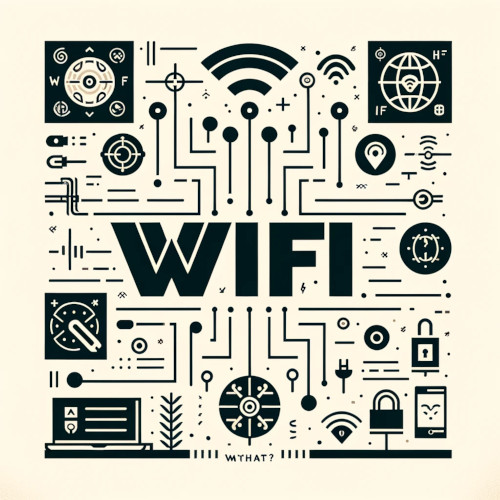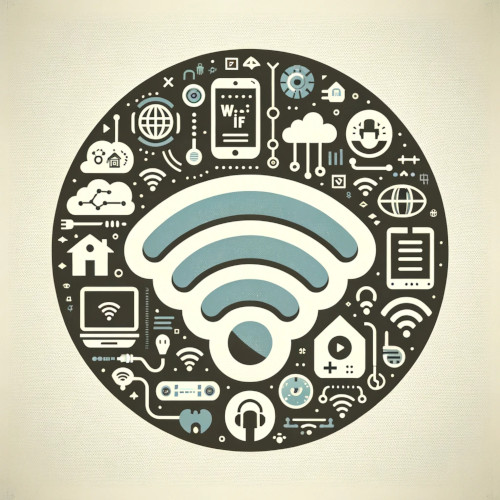What does wifi stand for
Unraveling the Mystery: What Does Wi-Fi Really Stand For?
The term 'Wi-Fi' has become so ubiquitous in our daily lives that its actual meaning often goes unquestioned. Contrary to popular belief, Wi-Fi does not stand for 'Wireless Fidelity'. This section aims to demystify the origins of the term. Wi-Fi, a name created with marketing in mind, was designed to be catchy and memorable. It was coined by the Wi-Fi Alliance, a global network of companies that sought a friendly name for the new wireless standard, IEEE 802.11.
The term was inspired by the term 'Hi-Fi' or 'High Fidelity', commonly used in the audio industry. However, unlike 'Hi-Fi', Wi-Fi doesn't have a long-form version. This clever marketing move helped Wi-Fi become more accessible and less intimidating to the general public, paving the way for its widespread adoption.

Wi-Fi: Beyond the Acronym - Understanding Its Roots
To truly understand Wi-Fi, it's essential to delve into its technological roots. Wi-Fi is a technology that allows electronic devices to connect to a wireless Local Area Network (LAN), primarily using the 2.4 gigahertz (GHz) and 5 GHz radio bands. Its development was a significant milestone in the history of wireless communication, tracing back to the pioneering work of Hedy Lamarr and George Antheil during World War II, who invented a frequency-hopping communication system - a precursor to modern Wi-Fi and Bluetooth technologies.
The actual development of Wi-Fi began in the late 1990s, with the formation of the Wi-Fi Alliance and the subsequent release of the IEEE 802.11 standards. These standards laid the foundation for the various Wi-Fi technologies in use today, offering a combination of range, bandwidth, and speed that was unprecedented at the time.
Decoding Wi-Fi: A Look into Its Name and Meaning
The creation and naming of Wi-Fi are subjects of significant interest. Wi-Fi, as a term, was designed to be both meaningful and marketable. It was chosen for its simplicity and resemblance to 'Hi-Fi', suggesting a wireless alternative to wired networks. The name was part of a branding strategy to make wireless networking technology more appealing to everyday consumers, distancing it from the complex and technical image of its predecessor technologies.
The Origin of Wi-Fi: What's in a Name?
Exploring the origin of Wi-Fi takes us back to the late 1990s. The Wi-Fi Alliance, initially named the 'Wireless Ethernet Compatibility Alliance' (WECA), was instrumental in standardizing and promoting the IEEE 802.11 technology. The term 'Wi-Fi' was invented by Interbrand, a branding consultancy hired by the Alliance, and was officially adopted in 1999. The name was not an acronym but was catchy enough to be easily remembered and recognized.
Wi-Fi Explained: More Than Just Wireless Fidelity
The misconception that Wi-Fi stands for 'Wireless Fidelity' is widespread. This section clarifies that Wi-Fi is not an acronym or abbreviation but a brand name. The Wi-Fi Alliance themselves have stated that Wi-Fi doesn't stand for anything. It's a testament to the power of branding that the term has come to be almost synonymous with wireless internet access, despite its origins as a simple, catchy name.

What's in a Name? Exploring the True Meaning of Wi-Fi
The term 'Wi-Fi' encapsulates much more than just a wireless technology; it represents a global shift in how people connect and communicate. Coined for its simplicity and ease of remembrance, the name Wi-Fi has become emblematic of fast, reliable, and accessible internet connection. While it may not stand for anything technically, its cultural significance cannot be overstated.
Wi-Fi: The Story Behind the Popular Wireless Technology's Name
The story of Wi-Fi is not just about technology; it's about how a simple, well-chosen name can facilitate the adoption of a complex technology. By choosing a name that resonated with consumers, the Wi-Fi Alliance ensured that Wi-Fi would become a part of the global lexicon. Today, Wi-Fi is more than a technology; it's a staple of modern life, essential for communication, work, and entertainment.
Breaking Down the Wi-Fi Acronym: A Comprehensive Guide
Despite not being an acronym, the term Wi-Fi has sparked curiosity and occasional confusion. It's a prime example of how a brand name can evolve into a generic term for a technology. Wi-Fi's success lies not just in its technological prowess but also in its branding - a term that's both catchy and descriptive enough to convey the essence of wireless networking.
Wi-Fi Deciphered: Understanding What the Name Represents
Wi-Fi, as a term, has come to represent much more than a set of technical standards. It symbolizes the freedom and flexibility of wireless connectivity. The name itself, while not an acronym, has become a symbol of technological innovation and a key enabler of the connected world we live in today.
From Wireless to Wi-Fi: Uncovering the Name's Origin and Significance
The transition from the generic term 'wireless networking' to the branded 'Wi-Fi' marks a significant point in technological history. It signifies not only the evolution of the technology itself but also the way it has been marketed and integrated into everyday language. Wi-Fi's name, while simple, encapsulates the essence of seamless, wireless connectivity, making it a cornerstone of modern communication.